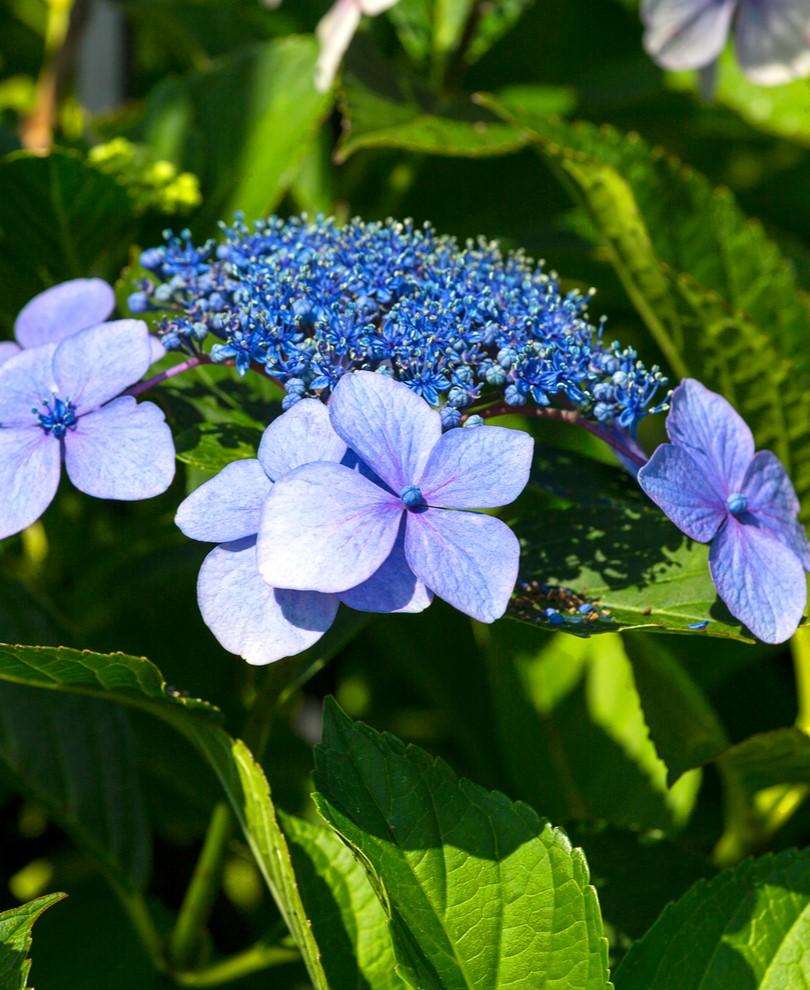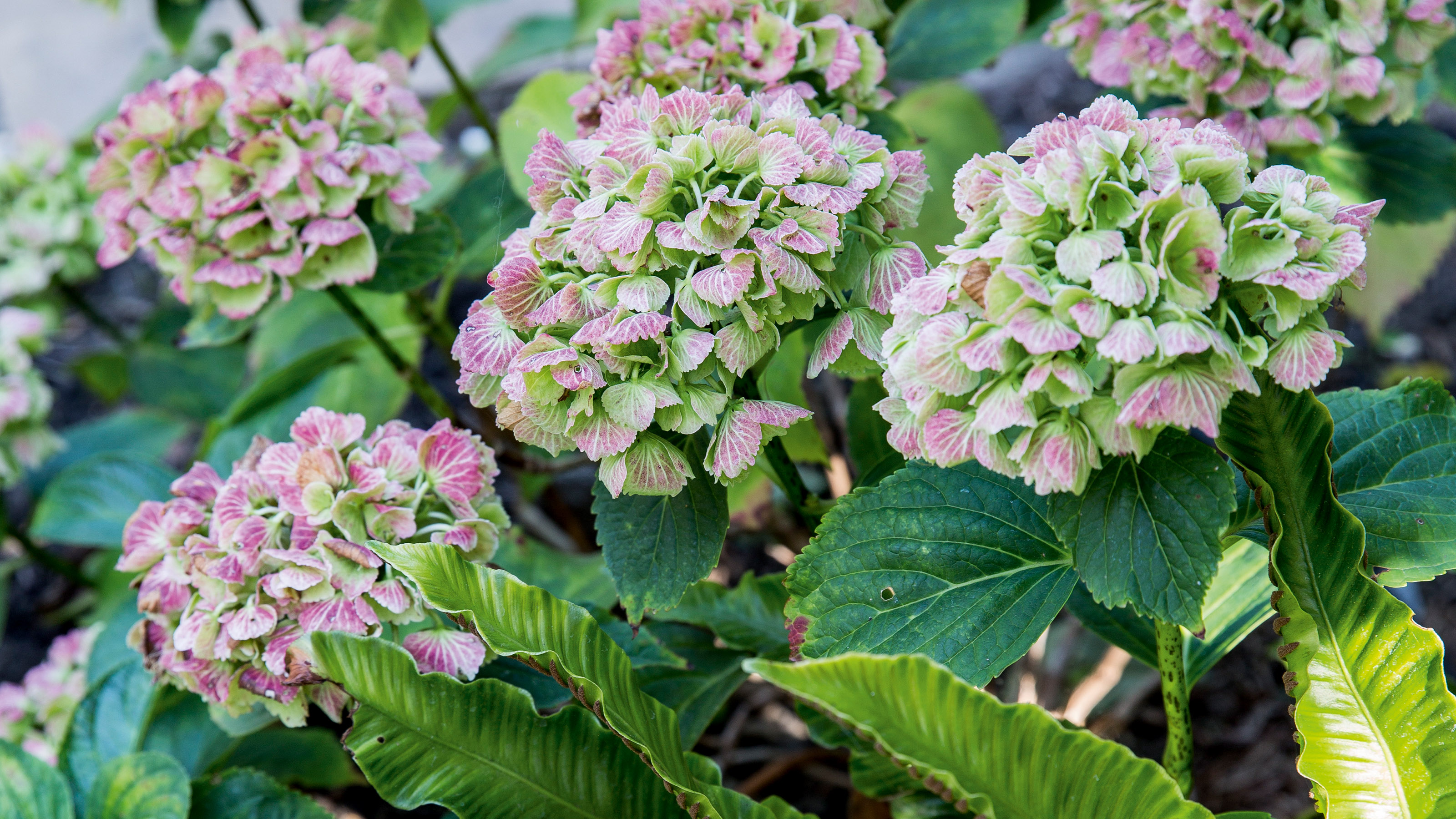The Hydrangea Teller: How To Read The Colors Of Your Hydrangeas
The Hydrangea Teller: How to Read the Colors of Your Hydrangeas
Hydrangeas are beautiful flowering shrubs that can add a touch of elegance to any garden. But did you know that the color of your hydrangeas can actually tell you something about the soil pH in your garden?
That's right, hydrangeas are one of the few plants that can change color depending on the acidity of the soil. In acidic soil, hydrangeas will typically turn blue, while in alkaline soil, they will turn pink.
So how can you read the colors of your hydrangeas to determine the soil pH in your garden? Here's a quick guide:
- Blue hydrangeas: If your hydrangeas are a deep blue color, then you have acidic soil. The acidity of the soil helps to bind with the aluminum in the soil, which is what gives hydrangeas their blue color.
- Pink hydrangeas: If your hydrangeas are a pink or red color, then you have alkaline soil. The alkaline soil prevents the aluminum from binding with the hydrangeas, so they turn pink or red instead of blue.
- Purple hydrangeas: If your hydrangeas are a purple color, then you have soil that is slightly acidic or alkaline. The pH of the soil is somewhere in between the two extremes, so the hydrangeas take on a purple hue.
- White hydrangeas: Some hydrangeas are naturally white, and their color will not change regardless of the soil pH.
If you want to change the color of your hydrangeas, you can do so by adjusting the pH of the soil. To make your hydrangeas turn blue, you will need to add aluminum sulfate to the soil. To make your hydrangeas turn pink, you will need to add lime to the soil.
It is important to note that it may take several weeks or even months for the color of your hydrangeas to change after you adjust the pH of the soil. So be patient, and eventually your hydrangeas will be the color you want them to be.
Here are some additional tips for reading the colors of your hydrangeas:
- The color of your hydrangeas may change slightly throughout the season. This is because the pH of the soil can fluctuate depending on the amount of rain or irrigation you receive.
- The color of your hydrangeas may also be affected by the amount of sunlight they receive. Hydrangeas that receive more sunlight will tend to be a lighter shade of blue or pink.
- If you are unsure about the soil pH in your garden, you can test it using a soil testing kit. This will give you an accurate reading of the pH, so you can adjust it accordingly.
Conclusion
Reading the colors of your hydrangeas is a fun and easy way to learn about the soil pH in your garden. By understanding how the pH affects the color of your hydrangeas, you can adjust the pH to get the color you want.
So next time you admire your hydrangeas, take a moment to think about what their color is telling you about the soil pH. It's a fascinating way to connect with your garden and learn more about how plants work.
Hydrangea teller is a beautiful and versatile shrub that can be grown in a variety of settings. It is known for its large, flattened flowers that can be white, pink, or red. Hydrangea teller is also a relatively easy plant to care for, making it a good choice for even novice gardeners.
If you are interested in learning more about hydrangea teller, I suggest visiting . This website has a wealth of information on the plant, including its history, care requirements, and different varieties. You can also find photos and videos of hydrangea teller in bloom.
I hope this helps!
FAQ of hydrangea teller
Q: What is hydrangea teller?
A: Hydrangea teller is a tool that helps you determine the color of your hydrangeas. It does this by taking into account the pH of your soil, the amount of sunlight your hydrangeas receive, and the type of hydrangea you have.
Q: How does hydrangea teller work?
A: Hydrangea teller works by using a pH scale to determine the acidity of your soil. The pH scale ranges from 0 to 14, with 7 being neutral. Hydrangeas that are planted in acidic soil will turn blue, while hydrangeas that are planted in alkaline soil will turn pink. Hydrangea teller also takes into account the amount of sunlight your hydrangeas receive and the type of hydrangea you have.
Q: What are the benefits of using hydrangea teller?
A: There are several benefits to using hydrangea teller. First, it can help you determine the correct color of hydrangeas for your garden. Second, it can help you avoid planting hydrangeas in soil that is not the right pH for them. Third, it can help you extend the lifespan of your hydrangeas.
Q: Where can I find hydrangea teller?
A: Hydrangea teller is available online at several websites. You can also find it at some garden centers.
Image of hydrangea teller
- Hydrangea Teller in full bloom. This image shows a large hydrangea teller plant in full bloom. The flowers are a beautiful shade of blue, and they are arranged in a large, cascading cluster.

- Hydrangea Teller in a pot. This image shows a hydrangea teller plant in a pot. The plant is healthy and well-maintained, and the flowers are a vibrant blue color.

- Hydrangea Teller close-up. This image shows a close-up of the flowers of a hydrangea teller plant. The flowers are a delicate shade of blue, and they are covered in tiny droplets of water.

- Hydrangea Teller in a garden. This image shows a hydrangea teller plant in a garden. The plant is surrounded by other flowers, and it is providing a splash of color to the garden.

- Hydrangea Teller in a vase. This image shows a hydrangea teller plant in a vase. The flowers are arranged in a beautiful bouquet, and they are sure to brighten up any room.

Post a Comment for "The Hydrangea Teller: How To Read The Colors Of Your Hydrangeas"